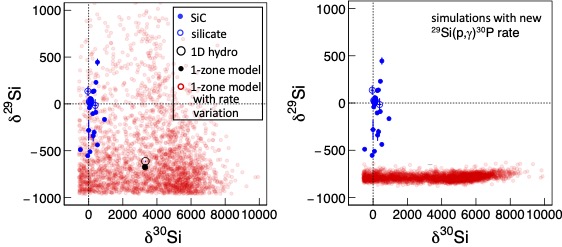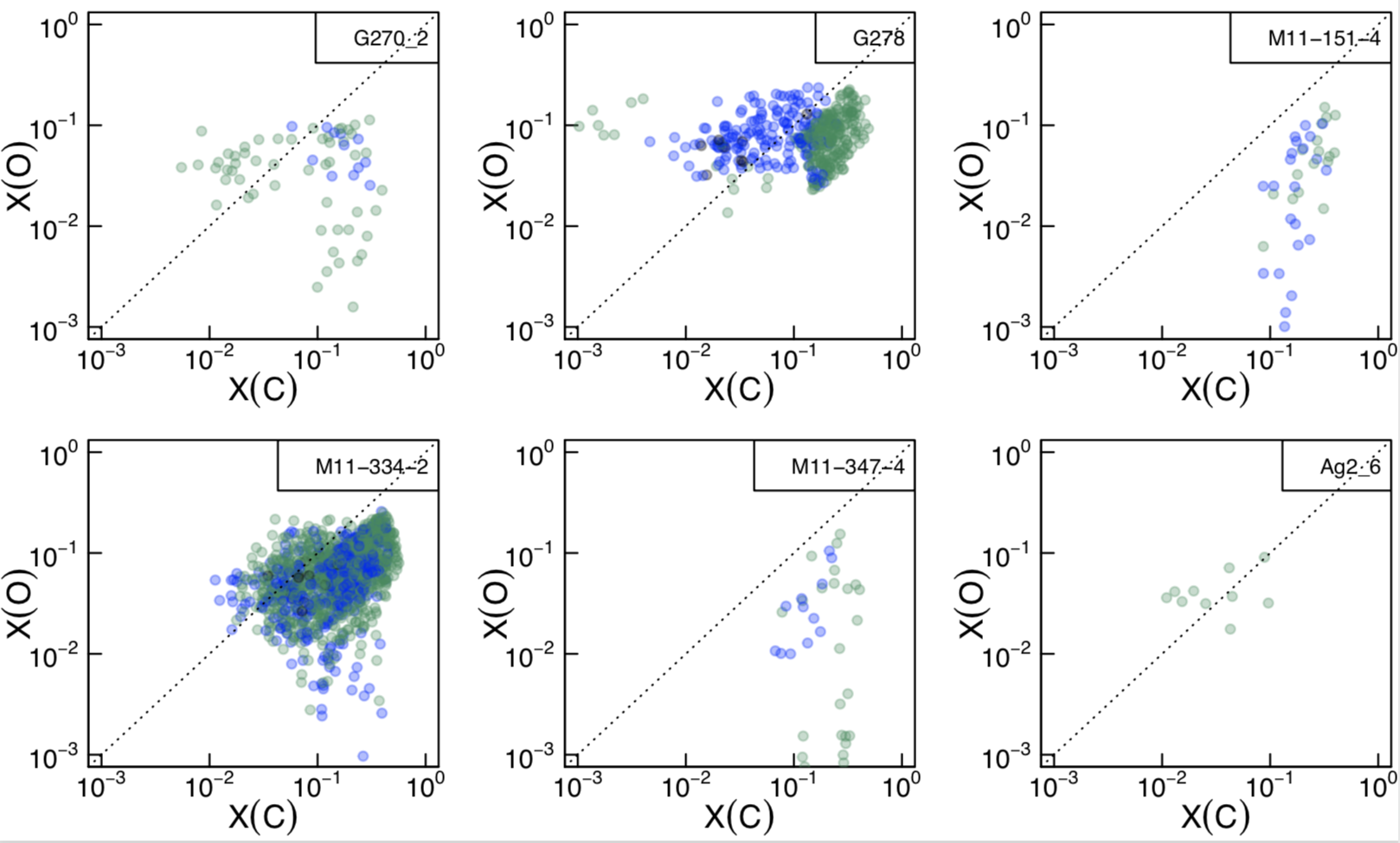Hydrogen burning of 29Si and its impact on presolar stardust grains from classical novae.
Presolar stardust grains found in primitive meteorites are believed to retain the isotopic composition of stellar outflows at the time of grain condensation. Therefore, laboratory measurements of their isotopic ratios represent sensitive probes for investigating open questions related to stellar evolution, stellar explosions, nucleosynthesis, mixing mechanisms, dust formation, and galactic chemical evolution. For a few selected presolar grains, classical novae have been discussed as a potential source. For SiC, silicate, and graphite presolar grains, the association is based on the observation of small N(12C)/N(13C) and N(14N)/N(15N) number abundance ratios compared to solar values, and abundance excesses in 30Si relative to 29Si, as previously predicted by models of classical novae. We report on a direct measurement of the 29Si(p,gamma)30P reaction, which strongly impacts simulated δ29Si values from classical novae. Our new experimental 29Si(p,gamma)30P thermonuclear reaction rate differs from previous results by up to 50% in the classical nova temperature range (T = 100–400 MK), while the rate uncertainty is reduced by up to a factor of 3. Using our new reaction rate in Monte Carlo reaction network and hydrodynamic simulations of classical novae, we estimate δ29Si values with much reduced uncertainties. Our results establish δ29Si values measured in presolar grains as a sensitive probe for assessing their classical nova paternity.
The figure compares silicon isotopic ratios (using the delta notation) measured in some SiC and silicate presolar grains (blue) to those obtained in classical nova simulations (red). Notice the large scatter of the δ29Si values in the left panel, which were solely caused by uncertainties in the 29Si(p,gamma)30P reaction rate. The large scatter prohibits establishing the nova paternity of specific presolar grains, based on measured silicon isotopic ratios. The right panel shows the significant reduction in the scatter of the simulated δ29Si values, based on our new measurement of the 29Si(p,gamma)30P reaction. This work is published in Downen et al., Astrophys. J 928, 128 (2022). Lori Downen is a former UNC graduate student.
Presolar stardust grains from carbon-oxygen classical novae.
About 30%–40% of classical novae produce dust 20–100 days after the outburst, but no presolar stardust grains from classical novae have been unambiguously identified yet. Although several studies claimed a nova paternity for certain grains, the measured and simulated isotopic ratios could only be reconciled, assuming that the grains condensed after the nova ejecta mixed with a much larger amount of close-to-solar matter. However, the source and mechanism of this potential post-explosion dilution of the ejecta remains a mystery. A major problem with previous studies is the small number of simulations performed and the implied poor exploration of the large nova parameter space. We used a different strategy, based on a Monte Carlo technique, that involves the random sampling over the most important nova model parameters: the white dwarf composition; the mixing of the outer white dwarf layers with the accreted material before the explosion; the peak temperature and density; the explosion timescales; and the possible dilution of the ejecta after the outburst. We discussed and take into account the systematic uncertainties for both the presolar grain measurements and the simulation results. Only those simulations that are consistent with all measured isotopic ratios of a given grain are accepted for further analysis. We also presented the numerical results of the model parameters.
We identify 18 presolar grains with measured isotopic signatures consistent with a CO nova origin, without assuming any dilution of the ejecta. Among these, the grains G270_2, M11-334-2, G278, M11-347-4, M11-151-4, and Ag2_6 have the highest probability of a CO nova paternity. The figure above shows the explosive temperature-density conditions that can explain the observed isotopic ratios for each grain. For more information, see Iliadis et al., Astrophys. J. 855, 76 (2018).


